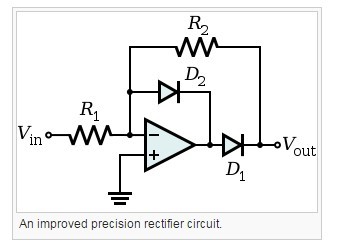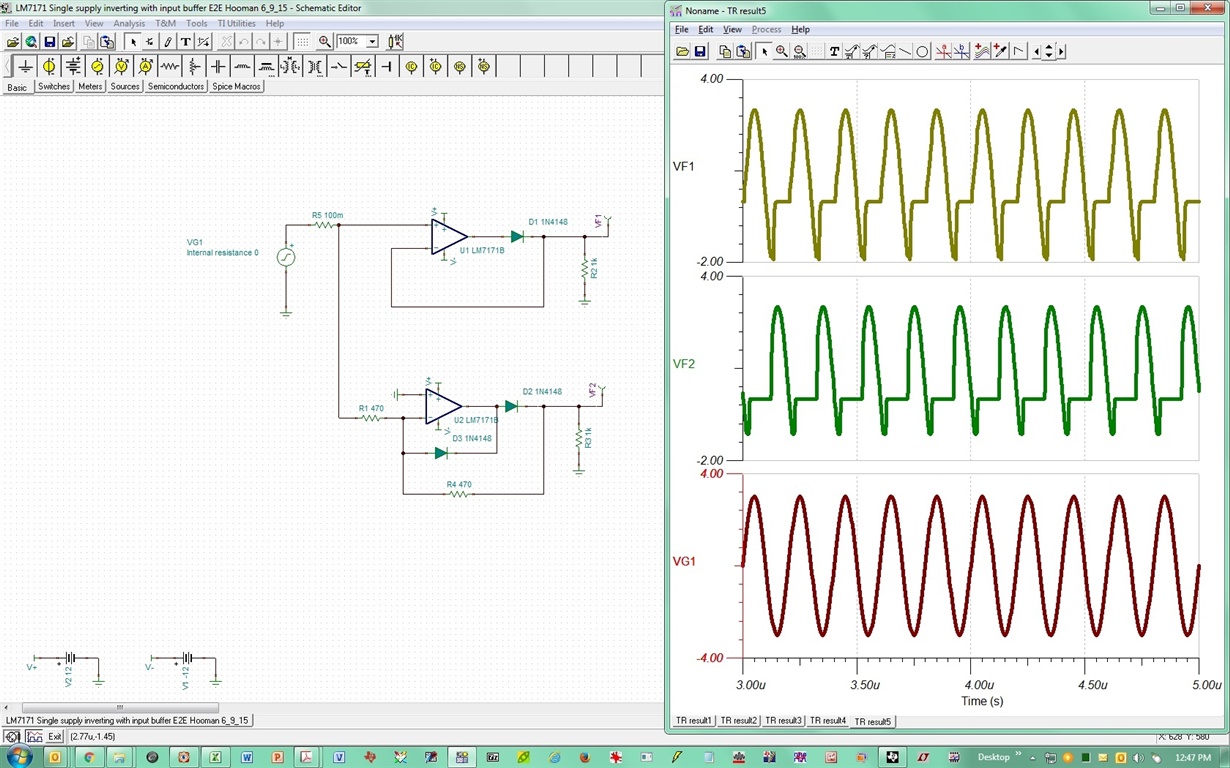Hello All,
I am using LM7171 Voltage feedback amplifier to amplify 5MHz input signal using non inverting configuration.
Power supply for LM7171 is +/-12V.
After amplification, I get the output +/- 7V peak (+7 to -7), 5MHz amplified signal.
Up to here, it is working very good.
Now, I want to remove negative portion (0 to -7V) from this amplified signal. (i.e I want to clip negative part.)
For this, generally clipper circuits are used using diode & op amp.
My doubts are:
Can this clipper circuit perform this task for high frequency (5 MHz, +/- 7V peak) signal?
Diode(1N4148) used in clipper circuit able to handle such a high frequency signal?
Will output signal distorted in amplitude & frequency?
Is there any other way to remove this negative part without using clipper circuit?
Thanks in Advance.
Regards,
Jigar Patel





